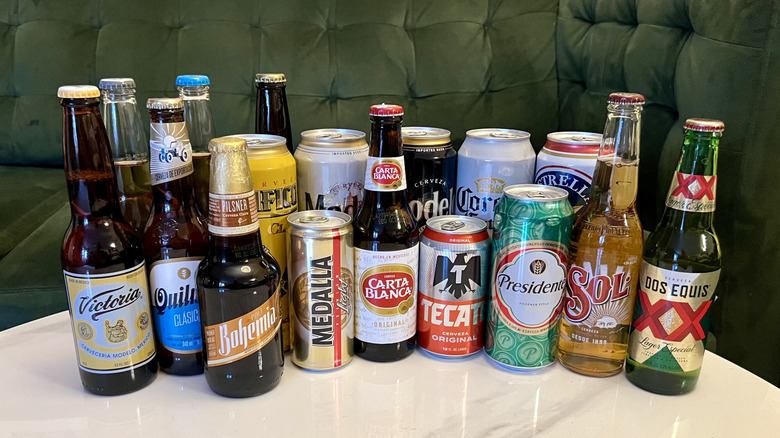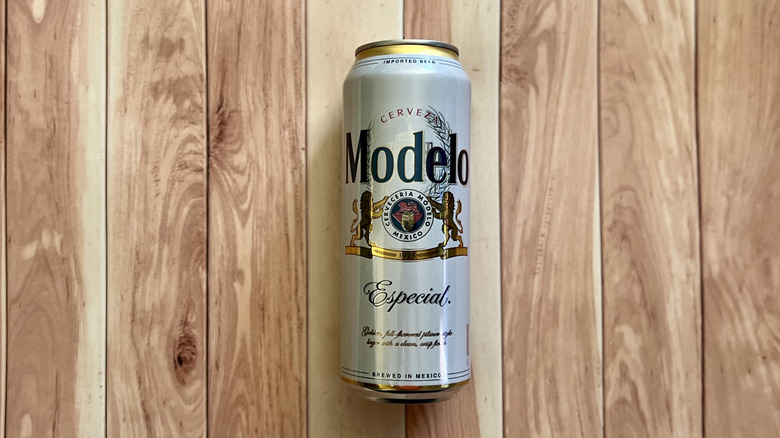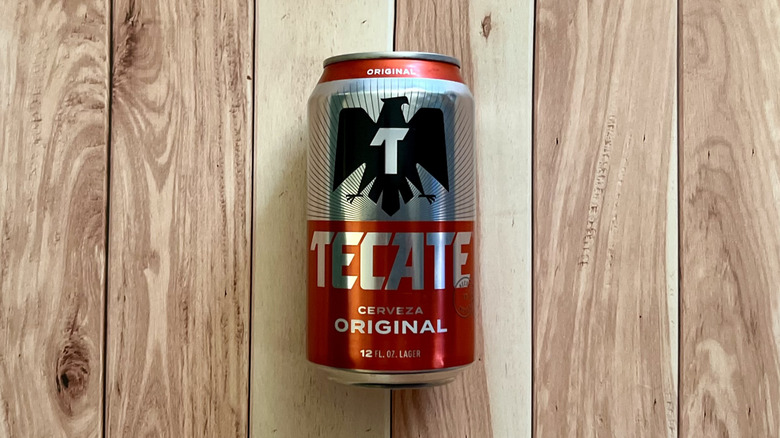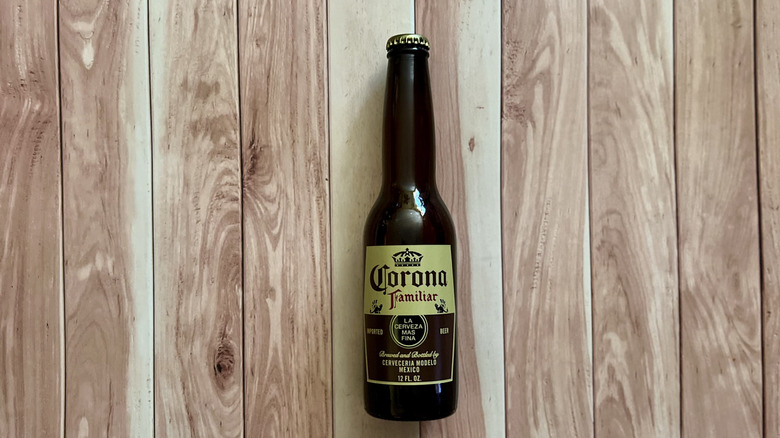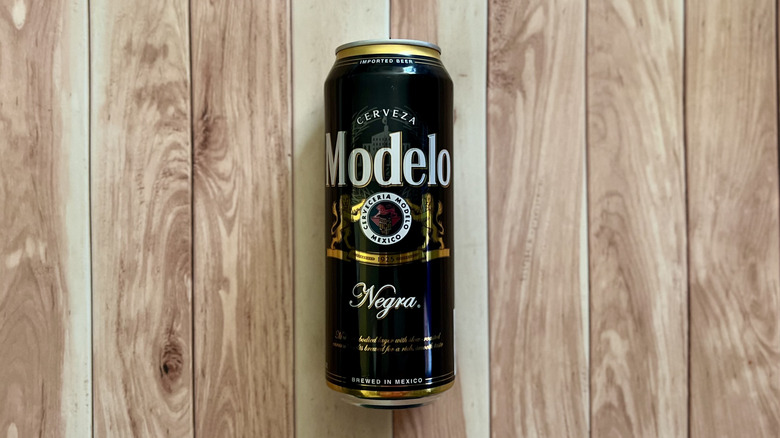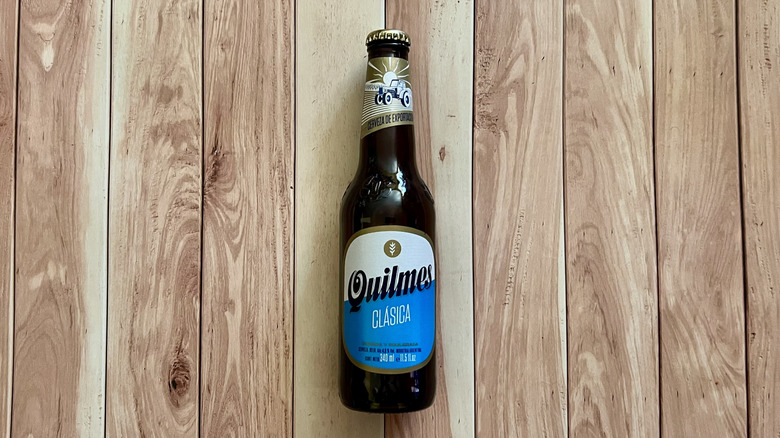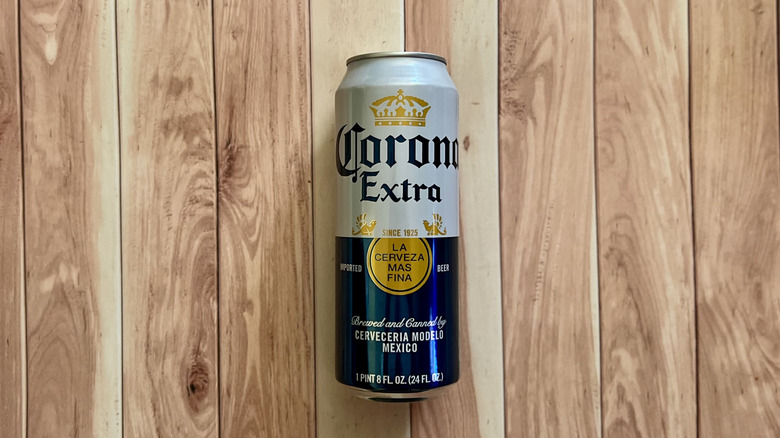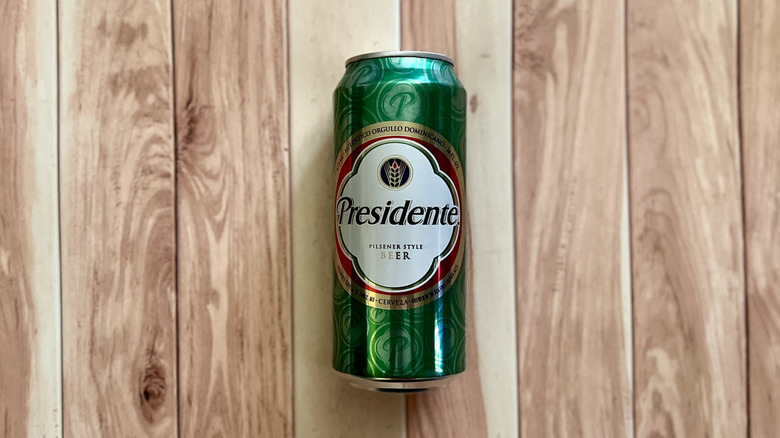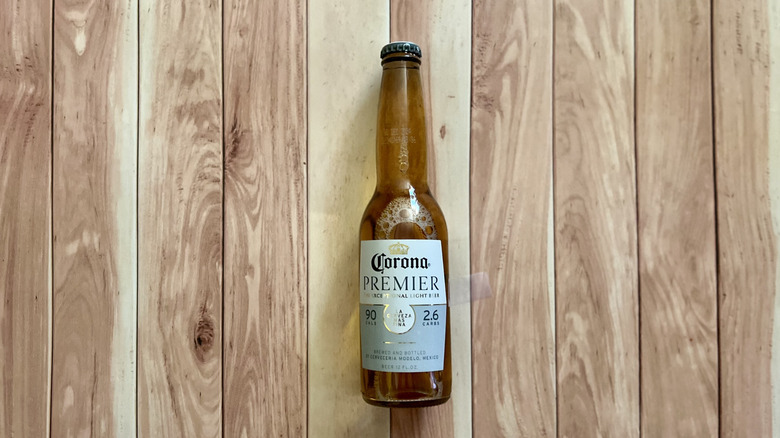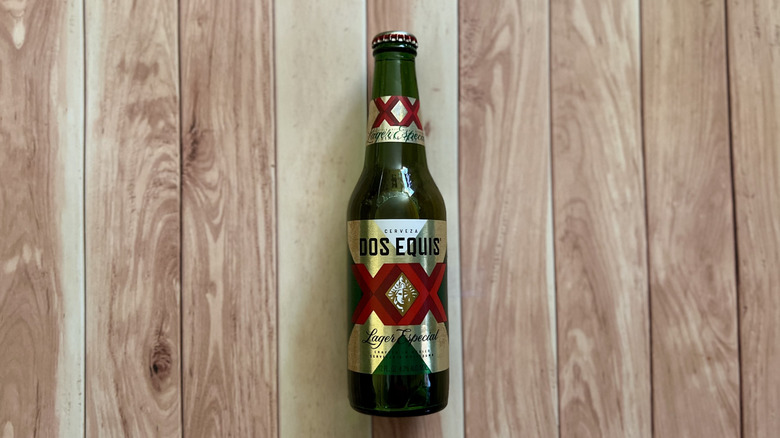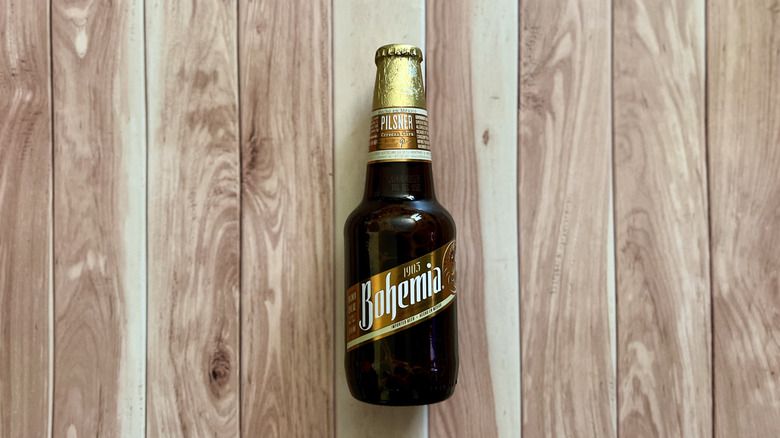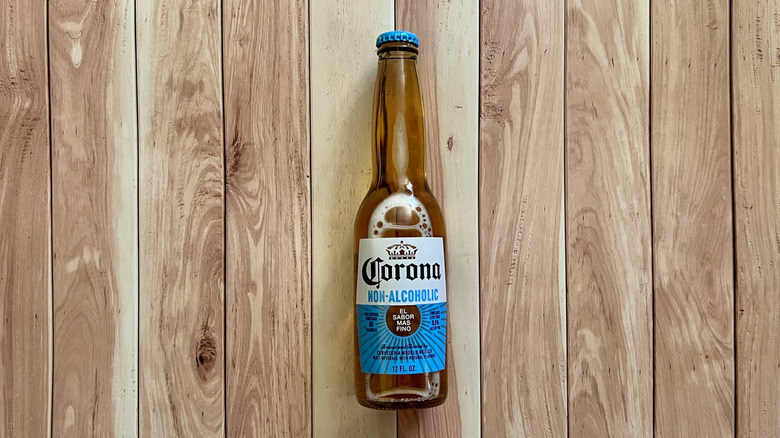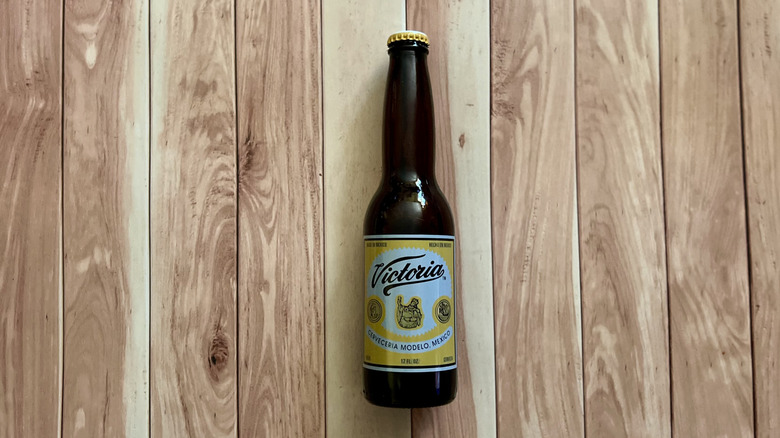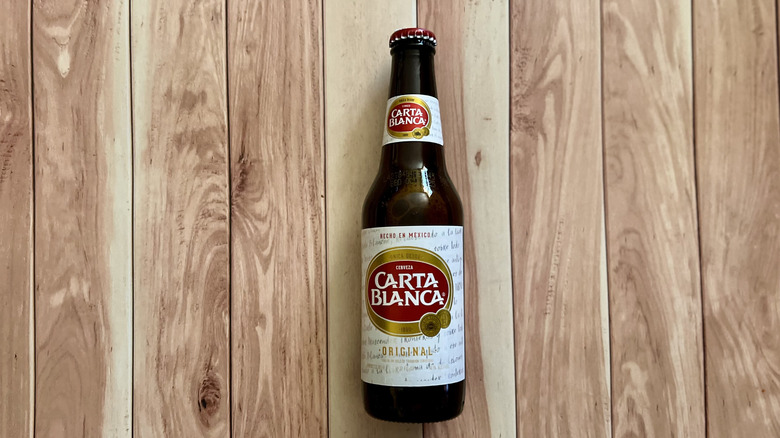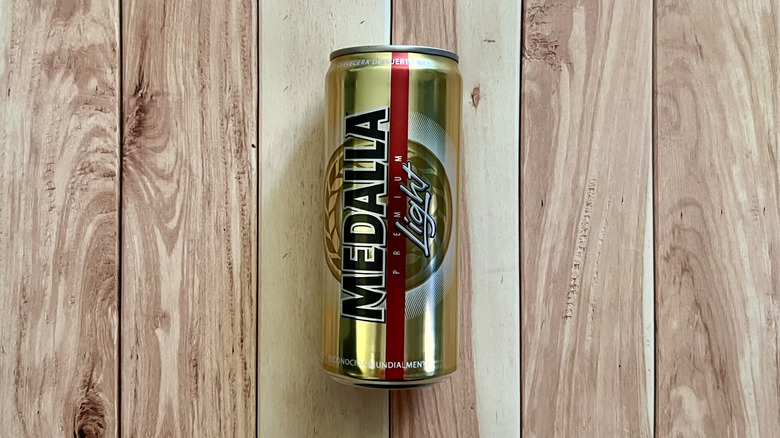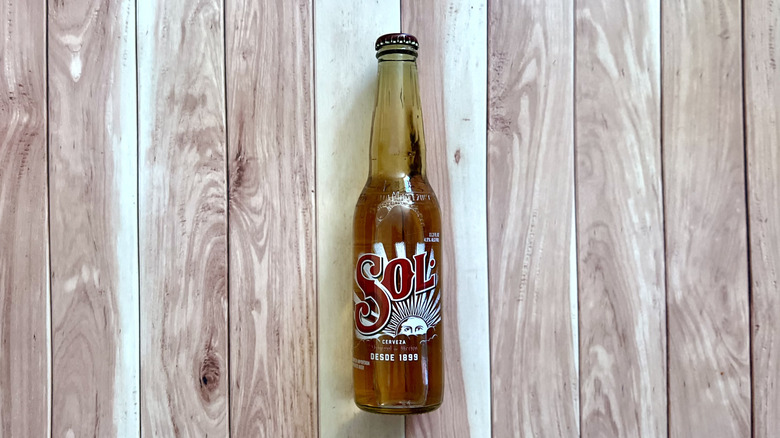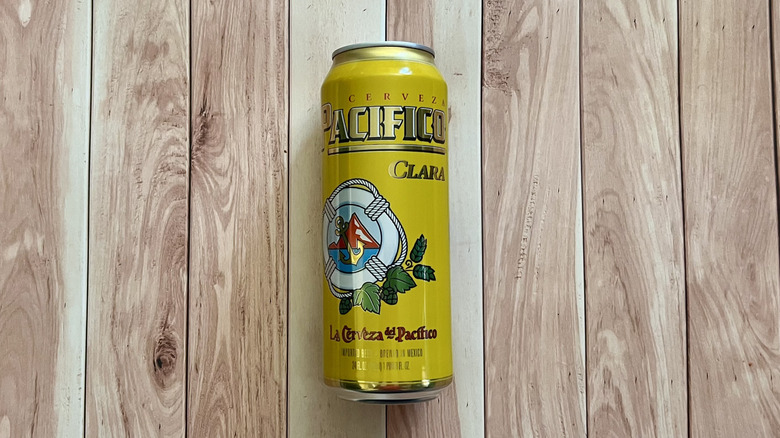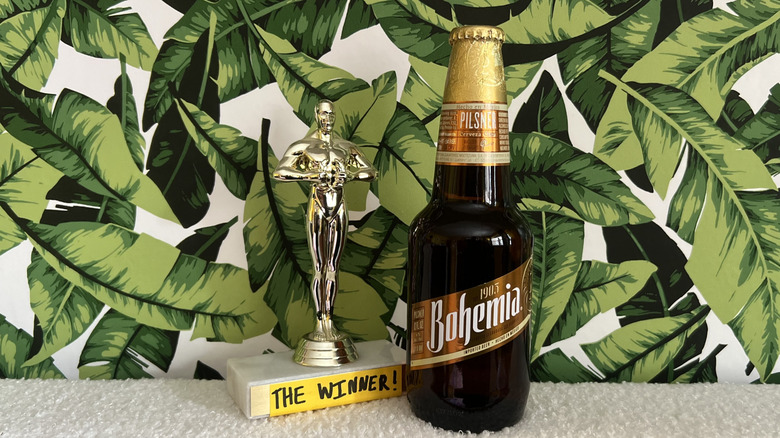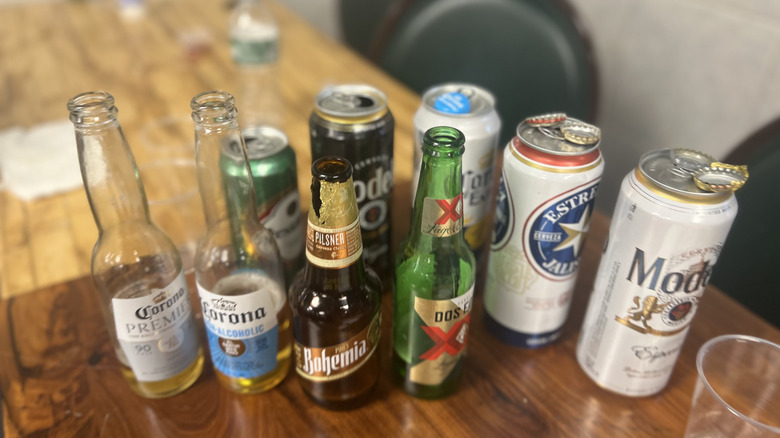What's The Best Mexican Lager? We Did A Blind Taste Test To Find Out
Lagers are one of the most popular types of beer in the world. Lagers differ around the world, and the cervezas that originate from Mexico started to form their unique taste when German and Austrian brewers settled in the country in the 19th century. By adding corn into the mix with hops and malt, the Mexican lagers and the ones stylized to be like them deliver a crisp and light refreshing beer for all to enjoy. These lagers popularity surged in the 1980s thanks to Corona, and has really never slowed down since.
With so many Mexican lagers and Mexican-styles produced by large and craft brewers, it's almost impossible to figure out which one to reach for first. The Takeout found worthy ones that fit the bill and sat down for a blind taste test to figure out once and for all which one is truly the best of the best. This task proved to be truly Herculean, especially since they share so many similar attributes and even tastes. Alas, I survived to tell this tale, and I hope you'll say cheers to the end results. Below the beers are listed in a random order.
Modelo Especial
A journey begins with a single step, and this one with a single sip. The beer that turned out to be Modelo Especial, and its flavor is characterized by the company as "an orange blossom honey aroma with a hint of herb." Personally, I didn't find anything all that "especial" about it, as it started off palatable, but finished with a bit of the bite.
The rest of the taste testing group seemed to like this golden brew more than I did. Someone called it "nice and light." Ultimately, I would rank this one as okay, but perhaps on the lower end of the group.
Tecate
The next pour ultimately went by the name of Tecate. The 4.5% ABV beer that was born in 1944 as "the perfect thirst quencher for the miners" of Baja California, Mexico, and has "a refreshing crisp malt flavor and a pleasant aftertaste — the way a Mexican cerveza should be."
To me it was a light yellow beer, with a pleasant smell that maybe echoed the essence of berries. It wasn't too bubbly, and any that existed which disappeared. While one taste tester noted "it tastes like water," I ended up taking to it more than the rest of the team. What's good for the miners then is good enough for me, and should be for you.
Corona Familiar
I wasn't even aware a beer existed in the Corona family that was stored in a dark brown bottle. You could say I was very unfamiliar with Corona Familiar, which came out in 2017 and is supposedly "malty & fruity, with notes of caramel."
This beer has a pleasant light golden color, a decent amount of bubbly foam, and a stringing perfume-y fruity smell. I couldn't really place it, but it stood out among the first two we tried. However, the more I became more familiar with this beer that later was known to me as Corona Familiar, the more forgettable it became. One taster simply stated, "It's actually nasty," and in my notes, I wrote, "I do not like this." It is a heavier drink with a bitter taste, which I would advise against doing what Corona suggests — sharing "for small gatherings with close friends and family."
Estrella Jalisco
The beer to follow the not so wonderful Corona Familiar basically just had one job — don't be any worse. The good news, I guess, for the one that was Estrella Jalisco wasn't that bad. I had actually always wondered what this one that came to be in 1910 and hails from Guadalajara tasted like. Especially having seen its name countless times in the outfield of Dodger Stadium, as it is the official cerveza sponsor of the LA team.
Maybe I was better off not knowing. While super foamy, this lager had a hue described by one on the team as "dehydration color," and no discernible smell. It was easy enough to drink, and was a non-offensive, just okay beer that didn't really register for me. Perhaps the winner of this blind taste test can become the next new official cerveza of the Dodgers.
Modelo Negra
The fifth beer had a lovely dark amber brown hue to it, which reminded me of Newcastle Brown Ale, and a smell that was reminiscent of the first four. This one turned out to be the popular Modelo Negra, which has taken Modelo drinkers to "darker" places since 1925.
The beer is described by Modelo as "Munich Dunkel-style Lager [that] is brewed with galena and super galena hops as well as caramel malt, black malt and two and six row malt barley." I found it to have a sharp, nutty taste, that was well more emboldened than the others. Taste testers noted "this is my kind of beer," and that unlike the others, this one "reminds me of an actual beer." I knew this one was a winner and marked it down as a top five finisher.
Quilmes Clásica
In my search for lagers to include in this taste test, I came across one I've never encountered before — Quilmes Clásica, which makes its way up north far from its home south of the equator. It's described (translated into English) as: "The quintessential Argentine beer. It's a typical, perfectly balanced lager, golden clear, with a good foam level and flavor. To make it, we use only natural ingredients grown in the fields of Argentina."
While known for its beef, Argentina is not known as a bastion of beers. Taking a swig of Quilmes didn't help that cause. It looked like Champagne and started to pass itself off as a light beer, before things headed south rather with a swell of bitterness. It quickly became a task to drink this one, as one of our tasters exclaimed, "it's horrible." I wouldn't go that far, but it was quite easy to quit on Quilmes.
Corona Extra
I wasn't able to tell by taste alone, but if there was one beer in this experiment that I was most acquainted with, it would be Corona Extra. This is the signature beer under the brand's banner since Corona's inception in 1925, and is noted for having "a refreshing, smooth taste balanced between heavier European imports and lighter domestic beer, Corona Extra is an even-keeled cerveza made for the beach, the backyard, or whatever you're feeling."
I couldn't identify Corona Extra blindly, even with its yellow-as-can-be coloring. It had a watered-down beer smell, and a taste that balanced decently between light and crisp, but in the end didn't make much of a mark. It's a middle of the road type beer that would have perhaps made better with a squeeze of lime. Then again, if a beer is good, why does it need something added to it?
Presidente
The Dominican Republic had a horse entered into this race, and this one that first got elected in 1935 goes by the prestigious name of Presidente. Described as a "Pilsner-style beer with floral notes of fresh hops, a light fruity aroma, a pronounced bitterness in the mouth, and moderate acidity."
This beer had a muddied golden color, and a nice foamy head. Leaning in for a whiff, it had a lemony-type smell to it. Sips revealed to start off with a real bite, before landing with a decent finish. One taster mentioned it was just an all-around "pleasant beer," although to me, it lost some of its appeal the more I had of it. This was a middle of the road beer, which is fitting as it was sampled about half way through the taste test.
Corona Premier
Corona is a beloved brand that has expanded its offerings to all kinds of drinkers this century. In 2018, looking to appeal to those looking for a lighter lager introduced Corona Premier, with less weighty nutritional values of 90 calories and 2.6 grams carbs.
To me, it was a beer that looked more like ginger ale, complete with carbonated bubbles nestled at the bottom of my cup. Corona Premier garnered stark reactions from the panel, with one saying "This is not a beer... this is a spritzer," and another immediately pouring out their cup after a single sip. I wasn't as reactionary to its flavor, as it tasted okay, but certainly didn't really register as a beer. Perhaps this would work as a beer-y alternative to enjoy slowly on a lovely sunny day.
Dos Equis Lager Especial
Ten beers in at this point, and the mind and tastes are all starting to blur together. How many times can I describe a different shade of golden yellow? This one looked like many others that came before it, and had a straight-forward light beer aroma.
This one turned out to be Dos Equis (which means "two Xs"), and is defined as "a golden pilsner-style beer made from the choicest hops. With a balanced composition and a smooth, clean finish, it's the party guest who is always invited and never overstays his welcome." Reading the tail end of that sentence turned out to be rather true wisdom. Someone in the party said, "This tastes like spring back, 2002 to be exact," which was meant as a compliment. This easy-going beer was crisp and effervescent, and no signs of bitterness. This solid beer received high marks all around, and for me, deserved an extra "equis" for being rather X-cellent.
Bohemia
I knew something was both different, and perhaps special, with this mystery beer right off the bat. It had a really distinguished smell to it, but I couldn't even place what that smell was. The taste also threw me for a positive loop, as it wasn't very beer-like, and instead refreshed in a seltzer-ginger ale type way.
Everyone in the testing committee championed this 11th beer we tried. Someone said it reminded them of a Lagunitas IPA, and to me, most of the other beers couldn't even remotely stack up against this one. I was already ready to end the taste test right then and there because I wanted to know what it was. A smile came to my face when I learned it was the pilsner Bohemia, which was born in 1905, and draws taste inspiration from points much further east — the Czech Republic. Na zdraví!
Corona Non-Alcoholic
This 12th beer was the last one tasted of the evening. It had a very pale yellow color to it. As I leaned in for a whiff, small notes of chocolate of all things started to seep through. I kept smelling it again and again because I was wondering if my nostrils were lying to me. Its taste was even more surprising. It was hard to classify, as it was not very cerveza-esque, and maybe could pass as an apple cider?
In the end, it turned out there was a real reason for having our senses fooled and pulled in all different directions — as this beer was incapable of making anyone inebriated. Current trends find drinkers seeking low to no-alcohol content in their beverages, and Corona obliged with its non-version in 2023. A for effort, but N for non-thanks.
Victoria
After a day's break to recover, my mind and mouth were refreshed and ready to go. I had a sharp memory, and solid notes of what came before, and ready to begin again. First on the docket was this super-amber brown one that almost looked like liquid honey, but oddly smelled like Coors Light.
This was a great kick-off to the final stretch, as a very refreshing lager that offered zero bitterness, and thankfully no bad aftertaste. This proved itself to be an instant winner, and a beer I'd like to have again. To the victors go the spoils, and to me, I'd like to be spoiled again with the beer that traces its roots back to Toluca, México in 1865 – Victoria.
Carta Blanca
Appearances aren't everything, but the one that later became known as Carta Blanca, didn't exactly have the friendliest of visual introductions. It looked like flat-apple juice, where the bubbles that first appeared in a pour went right out the door before I could even take a sip. Even a smell test came up with nothing discernible.
Luckily its taste fared better than its physical attributes. It was a very airy beer, with a tinge of bitterness that left a bite in the back of the throat. Nothing crazy good or bad about this one that doesn't give as much of a flavorful "carte blanche" as its name has been indicating since 1890.
Medalla Light
As Carta Blanca had issues with its look, the next one had a super translucent one to it. It was perhaps the clearest yellow liquid out of all the beers. It also allowed its foam head to stick around for an extended stay. This one was Medalla Light, Puerto Rico's contribution to the taste test, and it had a typical Mexican-lager-like essence to it.
Medalla Light only dates back to 1979, and got its inspired metallic name when the country hosted PanAmerican Games that same year. This lager made of carefully-selected hops and two-row barley certainly had a lightness to it, but had a muddled flavoring in its finish. Sadly, this one wasn't exactly close to reaching the podium in this taste test.
Sol
Next up was a beer that had such a deep dark yellow shade that it was almost opaque. A thin layer of foam hung around this one for a while, and it had a nice aroma to it that I actually couldn't stop myself from smelling. I'm not sure why it was so appealing to the nose, but it was.
While it had a light body to its taste and was easy to drink, its flavor almost bordered on a mild hazy IPA. That helped to make it stand out from the crowd of beers, which 16 beers in, started to all blend together even more. Well, this radiant beer that harkens back to 1899 has a rather fitting name — Sol. If it ever wanted to get a little clever, it could further aptly re-name it So(u)l.
Pacifica Clara
We finally made it to the finish line, and not sure how this was the last beer standing, but this taste test ended on a high note thanks to the uniqueness that Pacifica Clara dished out. This pilsner-style lager dates to 1900 and is brewed with two-and-six-row barley, a variety of hops and special malts roasted.
It had no foam head whatsoever and looked like reduced-sugar apple juice. Somehow, it tasted like an alcoholic take on apple juice, akin to a cleaner cider. The more I sipped on this one, the more I enjoyed it. After calling it quits, and all the beers' names were finally revealed, fresh on my mind was Pacifica Clara, which I will certainly keep in mind going forward.
The Winner: Bohemia
Before venturing on this mammoth taste test of easy-going Mexican lagers, I really didn't know how I was going to differentiate 17 beers that all mostly belong to a lager genre. Sometimes one can be heavily influenced by a beer's packaging, logo, and especially name, so it was illuminating to have none of those factors standing in the way or influencing my taste buds. What I liked, I liked, and what I didn't care for, I didn't care for. The beers that made an eventual name for themselves to me were the ones that strayed from the pack and delivered something new to the table.
The cream of the hops turned out to be, in no particular order, Pacifico Clara, Victoria, Dos Equis, Modelo Negra, and Tecate. You cannot go wrong with any of those, but I knew by the time we got to beer No. 11 I had found my instant-winner, and the next six that followed had to disprove otherwise. Some came close, but none could top the wonders of Bohemia. Now that I know its name, its moniker even adds more allure beyond its taste. Perhaps you may not agree with this assessment, but this is how the scientific study came to a conclusion. Perhaps you should czech Bohemia out for yourself. Cheers to you, and please drink responsibly.
Methodology
I was able to procure different beers that were either Mexican lagers or Mexican-style lagers and pilsners between Manhattan and Brooklyn, New York. While I ideally wanted each beer to be housed in the same serving container, I had to settle for whatever I could get, which was an array of bottles and cans.
The blind test taste itself commenced on a Saturday in March of 2025. In this initial setting, nine adults, including myself, tastes tested the beers. Seventeen beers is too much to tackle in one sitting, but we got as far along as 12 before calling it quits for the night. I did the rest on my own. Each drink was tasted once in the random order I had no knowledge of, and there were no second round sips.
The strong opinions of the taste testers were noted and taken into consideration for this blind taste test, but ultimately I decided on the best of the best, and declaring an final winner. The final criteria for doing so included flavor, aroma, color, foam, bitterness, crispness, palatability, love or hate at first sight, and which beer ultimately was the one I wanted to drink more and more, and more so than the others.
